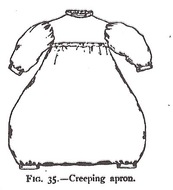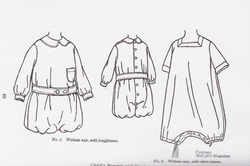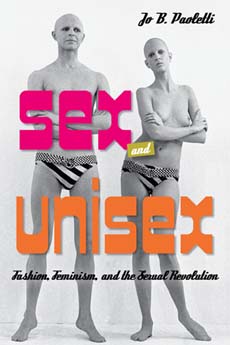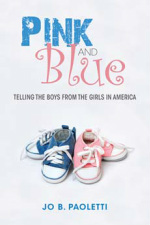Babies from birth to around 6 months: long white gowns, ranging from minimally embellished to elaborately trimmed with lace and embroidery.
Babies from six months to a year or slightly older: short white dresses and one-piece rompers. Again, these could be plain or fancy, depending on the occasion and the family's budget and needlework talents.
Gender differences were introduced between one and two years, with little boys exchanging dresses for short trousers, often attached to their shirts or blouses with buttons at the waistline. Little girls stayed in dresses, but in an array of colors.
Here's a video I created for the occasion:




